No. 14 On The Map
Virginia Mae Center Gardens

Originally known as the College of Preachers, the newly renovated Virginia Mae Center sits near the northeast corner of the Cathedral at the intersection of South Road and Woodley. The Virginia Mae Center is a fully accessible and LEED-certified facility that will be a central hub for the newly launched Cathedral College of Faith & Culture, the public gateway for Cathedral programs.
When Bishop Henry Yates Satterlee first imagined what would become Washington National Cathedral, he not only envisioned a great Gothic cathedral to serve the nation but also a “School of the Prophets” to serve the wider church.
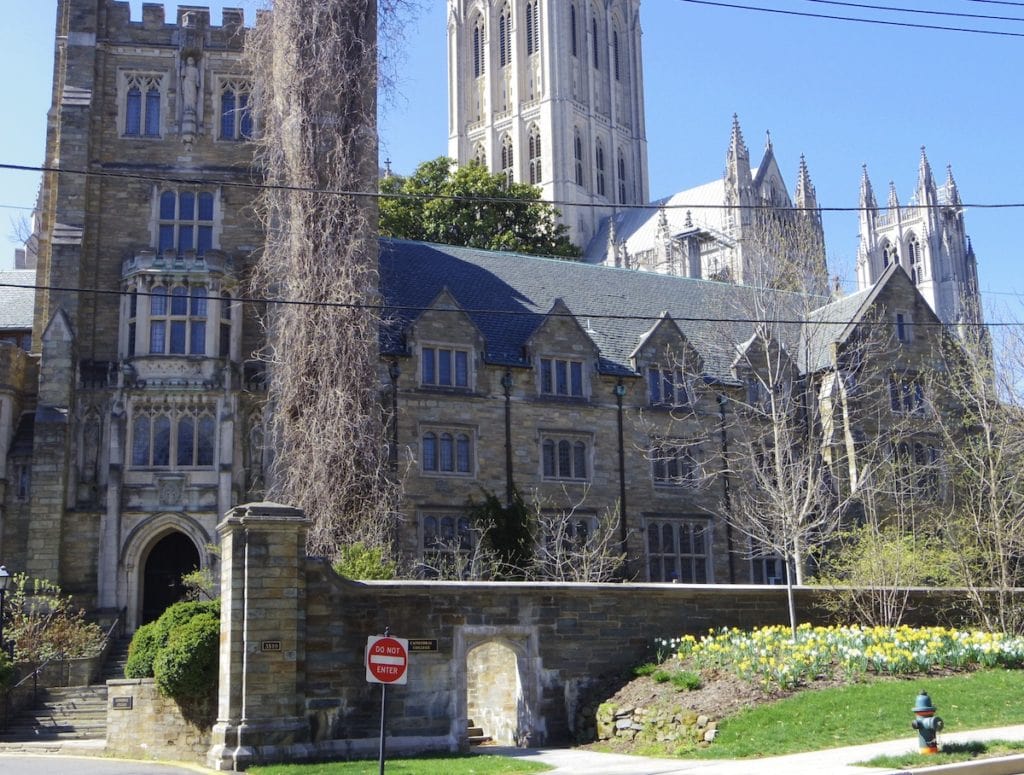
The College of Preachers opened in 1929. Alexander Smith Cochran of New York City, heir to a textile fortune, gave the funds for the building of the College of Preachers, including the original Cloister Garth. The financial recession forced the closure of the College in 2008, but work began in 2019 to renovate and restore the building as The Virginia Mae Center. Renovation was made possible by catalytic gifts by Virginia C. Mars and her daughters, and Andy and Heather Florance.
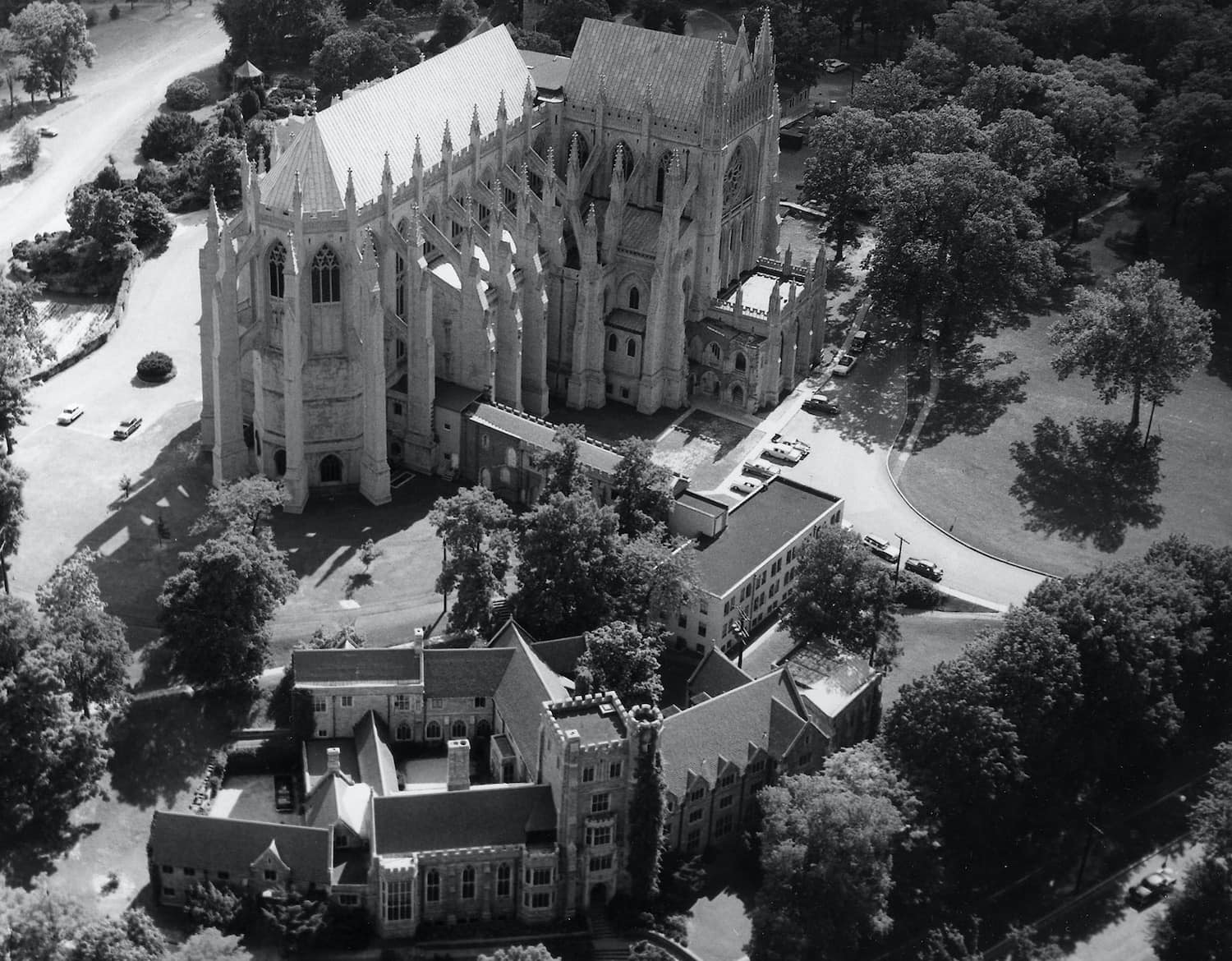
On the north side, near the main entrance to the Virginia Mae Center, visitors are greeted by a dogwood (Cornus Florida), boxwoods (Buxus Sempervirens), and buttonbushes (Cephalanthus Occidentalis) with an underplanting of cranesbill geraniums (Geranium macrorrhizum) – all to the left of the main steps. Buttonbush attracts birds including hummingbirds and pollinating insects. The nutlets that appear in the winter are a food source for overwintering birds. Deutzia appears in the Spring. To the right of the stairs are several Viburnum Winterthur (Viburnum Nudum), Tea Olive (Osmanthus x fortunei) , Ninebark (Physocarpus opulifolius), Blue Star (Amsonia hubrichtii), Avens (Geum hybrid) and more Cranesbill Geranium. A large wisteria, part of the original planting of the College of Preachers, climbs up the corner of the tower near the main entrance of the college.
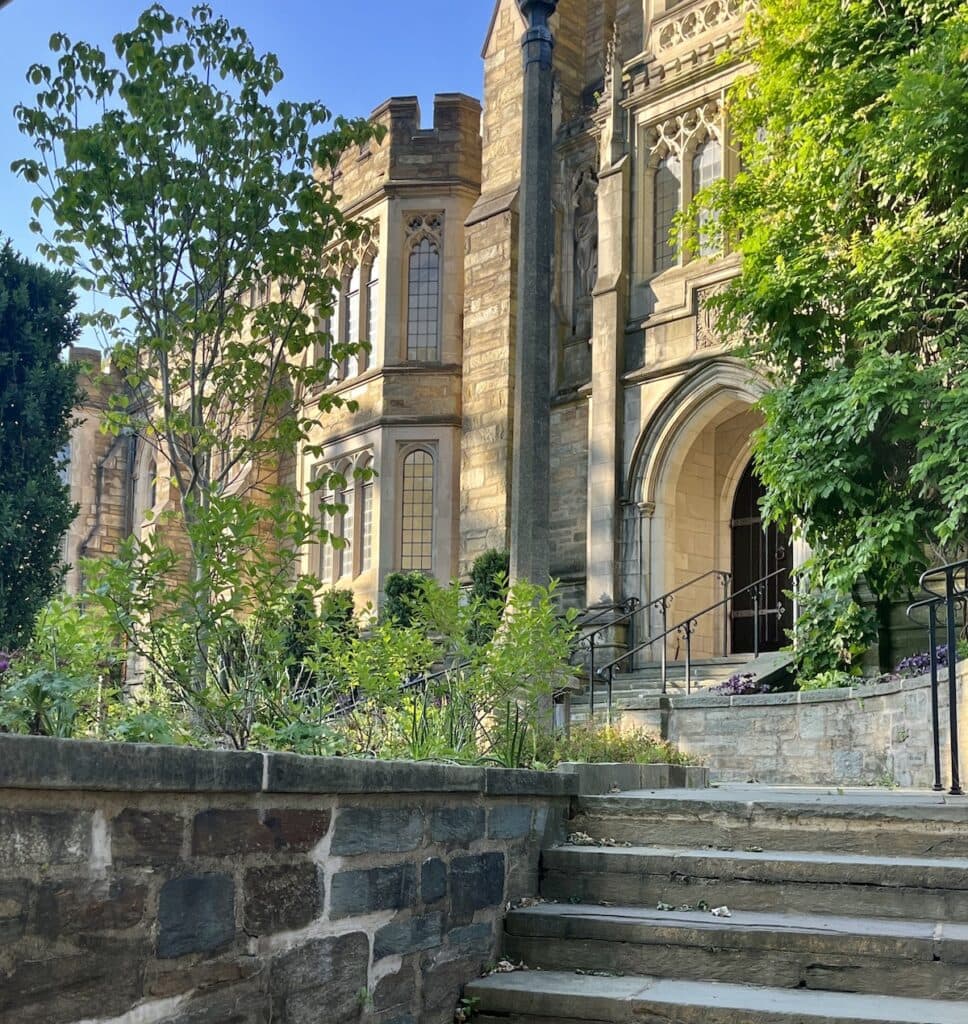
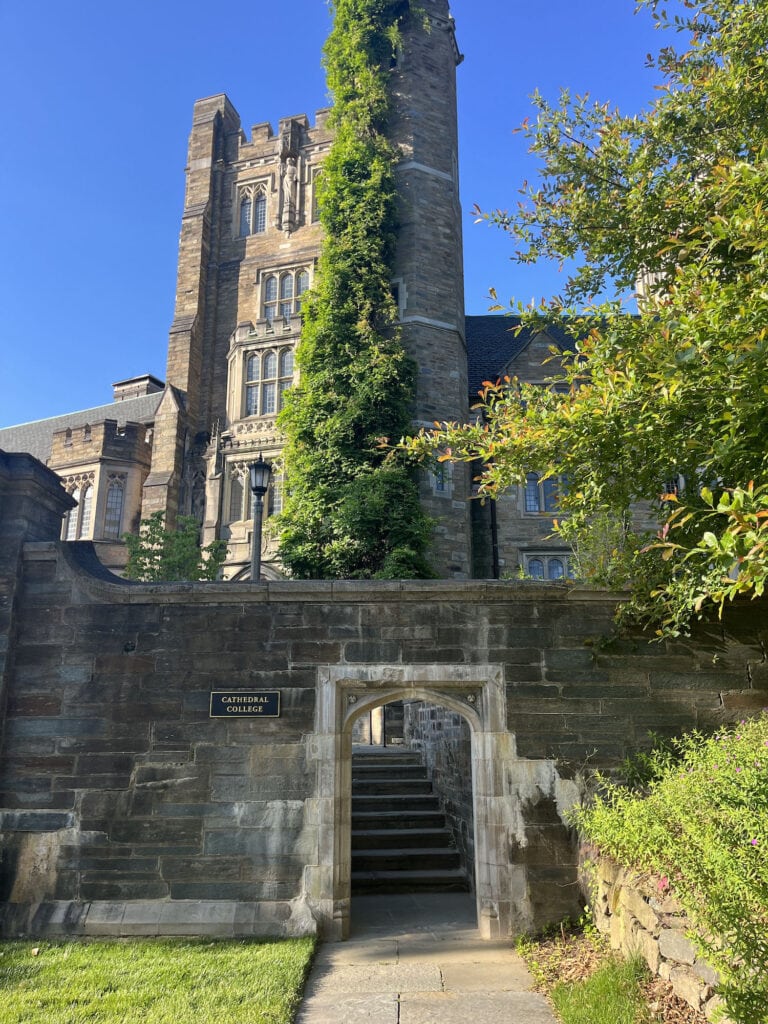
The garden to the left of the building entrance consists of over several varieties of boxwood (Little Missy and Dee Runk), Witherod Viburnum, and Ruby Slippers Oakleaf Hydrangea.
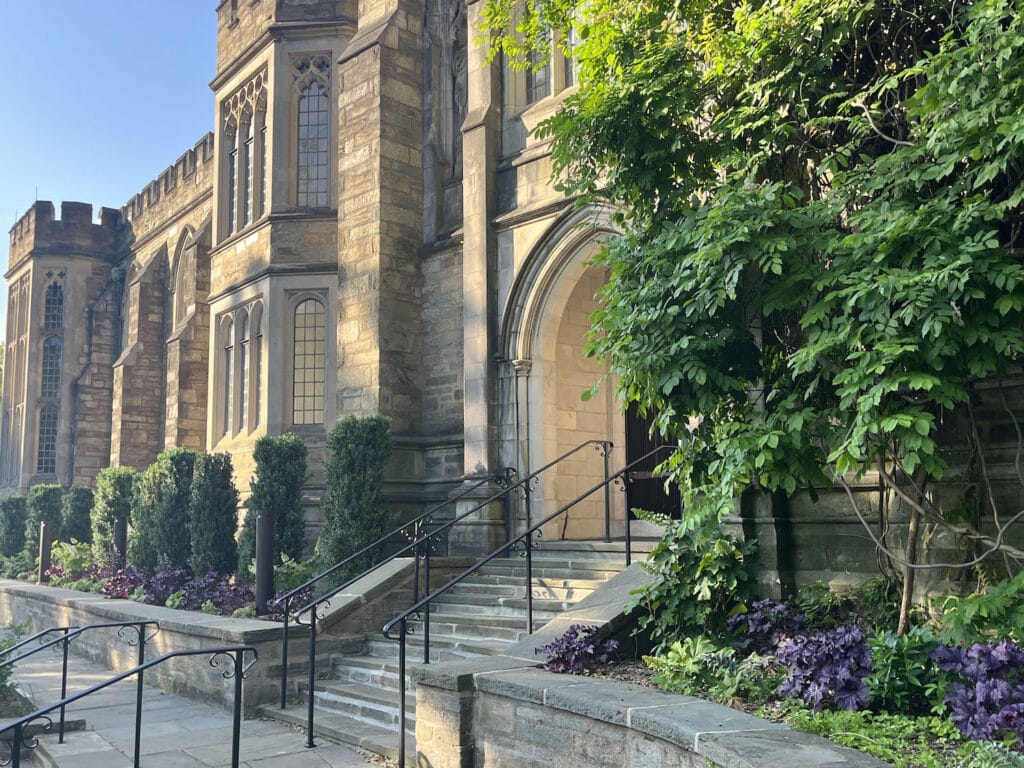
Florence Bratenahl, one of the Cathedral’s early landscape designers, was awarded the Emily D. Renwick Achievement Medal of the Garden Club of America in 1930 for the original design of the College Garth. The enclosed Garth includes a pool made from an old mill-stone.
“An ancient mill-stone of glistening white flint worn and scored with an attractive marking of grooved lines, forms the bottom of the pool. In its center, an opening in the shape of a cross was filled with molten lead, carved, and hammered into a primitive cross while from its center, out of a heavy shaft of lead, was fashioned the spout of the fountain. It meant hours for the designer, Mrs. Bratenahl, using chisels, hammer, and blacksmith’s rasp, but there was the joy of working with material that might last through the centuries. The stone rim of the pool was cut from solid block from the historic quarry originally owned by George Washington.” Cathedral Age, Michaelmas, 1930
To read the full article from Cathedral Age CLICK HERE.
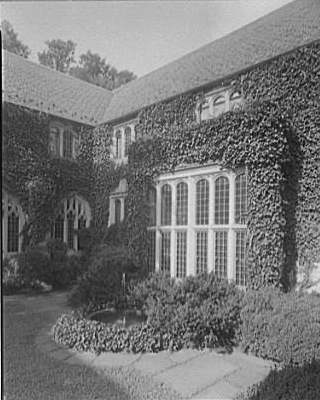

The Cloister Garth was renovated in 1988. The children and grandchildren of Margery B. and Urban E. Bowes donated the funds for the restoration. Mr. David Bowes, the son of Mr. and Mrs. Urban Bowes, is a past Council member of the College of Preachers and a past chair of the Council. A bronze plaque in memory of Margery and Urban Bowes is located in the Garth. The Garth was again restored as part of the Virginia Mae Center renovation and reopened in 2023.
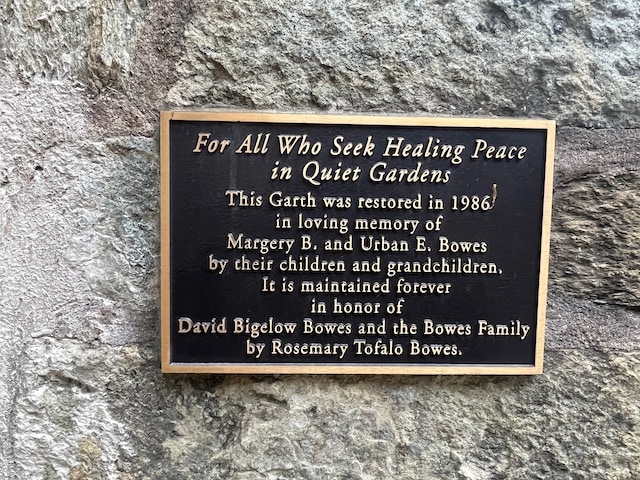
The 2023 renovation of the Garth included new plantings, paving, the restoration of the fountain, and new seating. The Carolina Silverbell (Halesia Carolina) tree survived the move to a more central location within the Garth. Boxwoods, Camellias, Bluebeards, hydrangeas and other shrubs and perennials line the walls of the Garth. All Hallows Guild provided funds for the garth plantings, stonework, and fountain restoration. The garth is not open to the public.


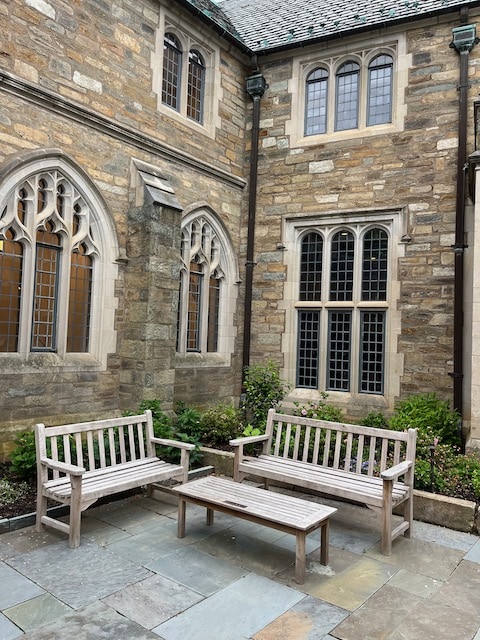

This iron sculpture, originally located in a far corner of the Garth, was moved during the recent renovation – while work was being done to the Garth’s entry door. The daughter of the Reverend Montague Geer donated this piece to the Cathedral College in his memory. The exact date and maker are unknown, but it is believed to be from a monastery in Lucca around the seventeenth century.
As you make your way along the sidewalk towards the Cathedral, you will see the bio-retention area that was established as part of a stormwater management plan. The 64 different varieties of trees, shrubs, perennials, and grasses were selected based upon their ability to withstand both inundation and drought. Among the plantings are three native paw paw (Asimina Triloba) trees and Black Tupelos (Nyssa Sylvatica). While the Walker Fern Garden donated by Mallory and Diana Walker’s children in 2004 was replaced to allow for the renovations, the Northern Maidenhair, Japanese Painted, and Royal Ferns nestled along the north side of the building are a nod to the Fern Garden. Six Arborvitae planted along the walkway up the hill provide structural height and interest to the garden.

Along the flagstone walk and steps towards the front of the Virginia Mae Center Chapel, more native plantings such as buttonbush, viburnum (viburnum nudum and Viburnum trilobum), Sweetspire (itea virginica) Golden Ragwort (packera aurea) and Beardtongue (Penstemon digitalis) provide color as well as a habitat for birds and insects. A white oak (Quercus Alba) was planted in front of the chapel.

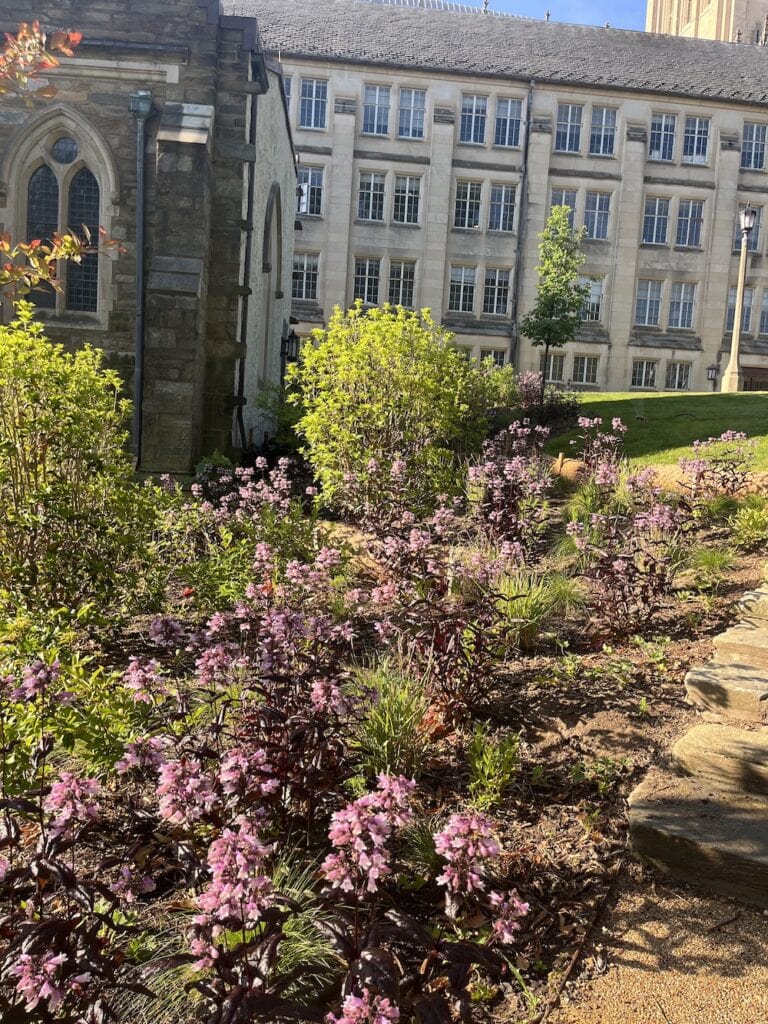
As you walk towards the Cathedral apse, the back hillside of the Virginia Mae Center is covered in hydrangeas and boxwoods. The 180 Sweetspire bushes planted along the steep grade between the walkway and the back of the Virginia Mae Center will provide erosion control. Three Teddy Bear Southern Magnolias (Magnolia Grandiflora) make up the newly planted Magnolia Court at the rear of the building with several Osmanthus trees.
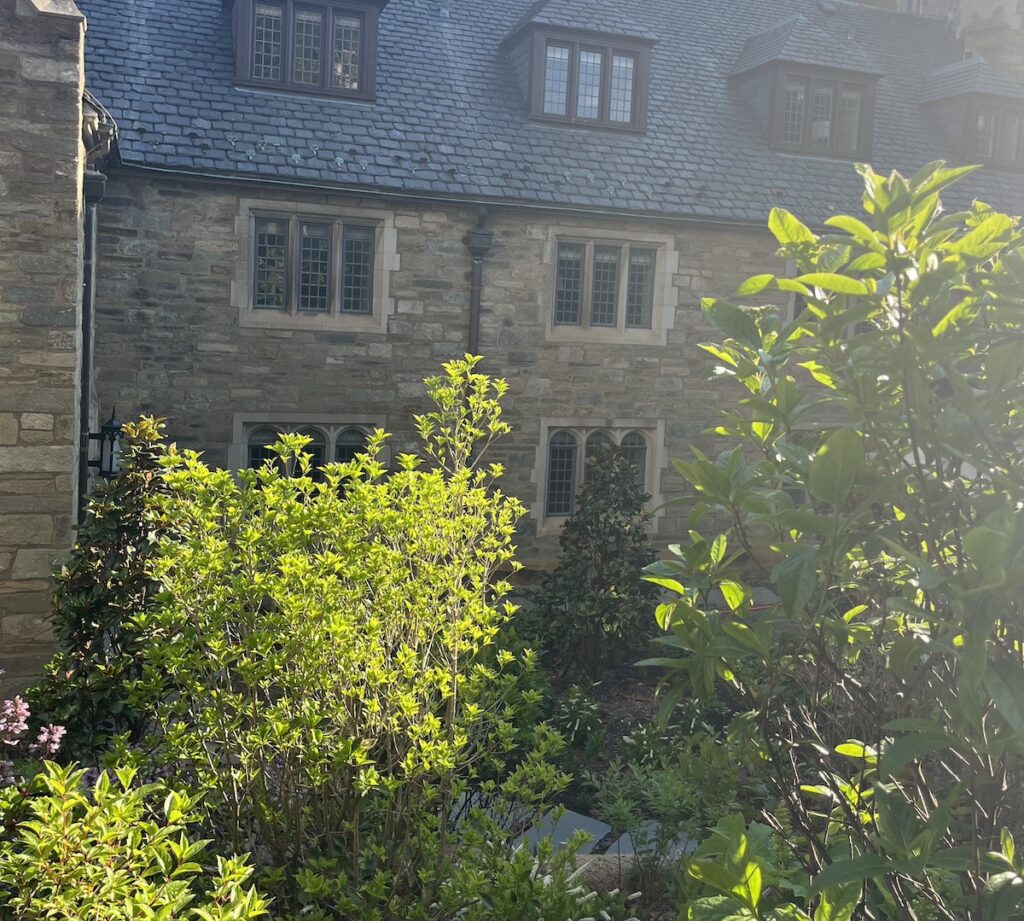
Lining the sidewalk between the Virginia Mae Center and the Cathedral Garth are hydrangeas and dogwood trees.

Photinia covers a portion of the Cathedral’s Administration Building near the Cathedral Garth, and a hedge of Sweetspire borders the path to the Cathedral Library.

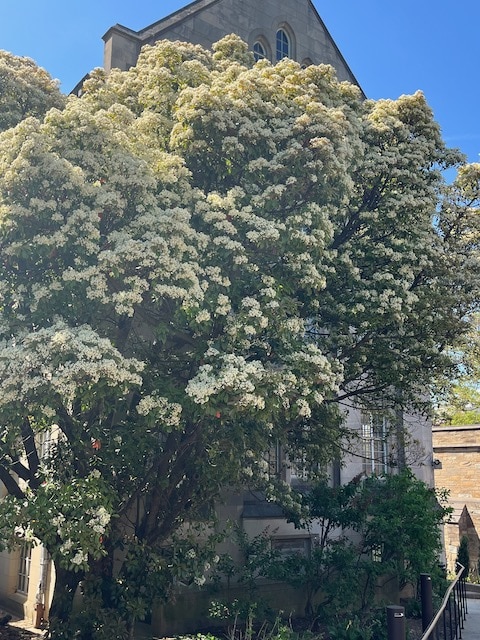

Walking up from the Virginia Mae Center to the North Road circle you reach the arched entry to the Cathedral’s Garth. The Garth is enclosed by the cloister, the Cathedral, and the administration building.
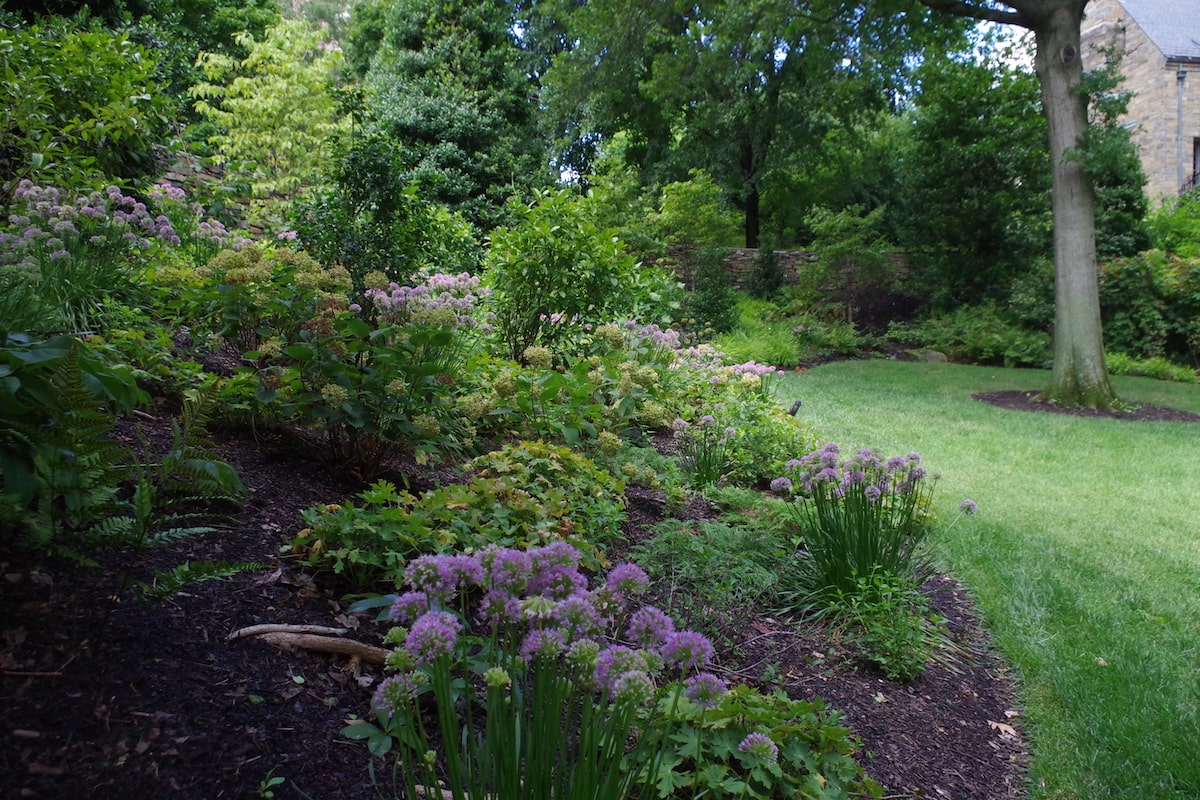
Help Us Keep The Gardens Growing
Partner with us to ensure that the 57 acres of gardens and grounds surrounding Washington National Cathedral continue to be a haven of peace and refreshment in the midst of the Nation’s Capital.


